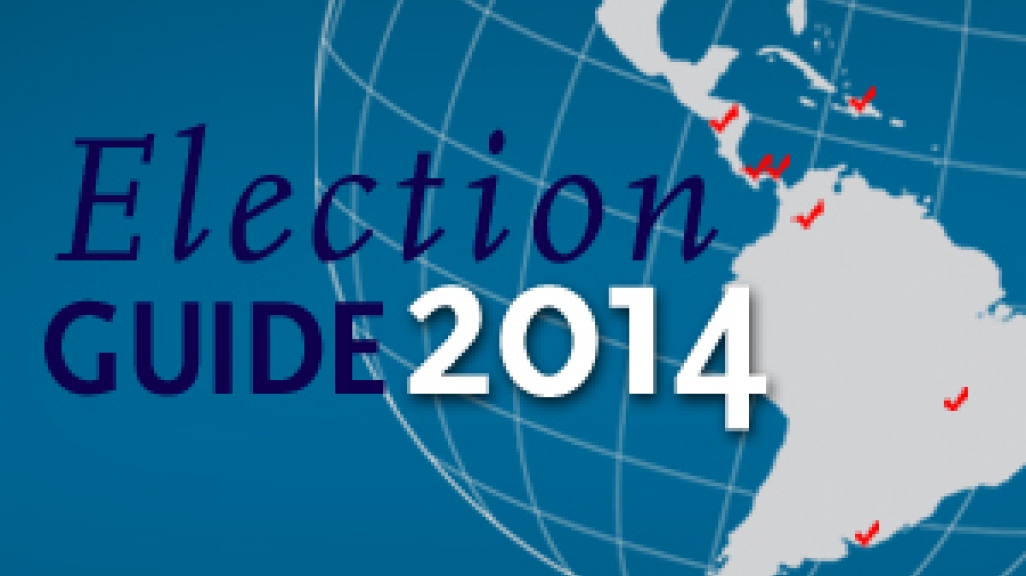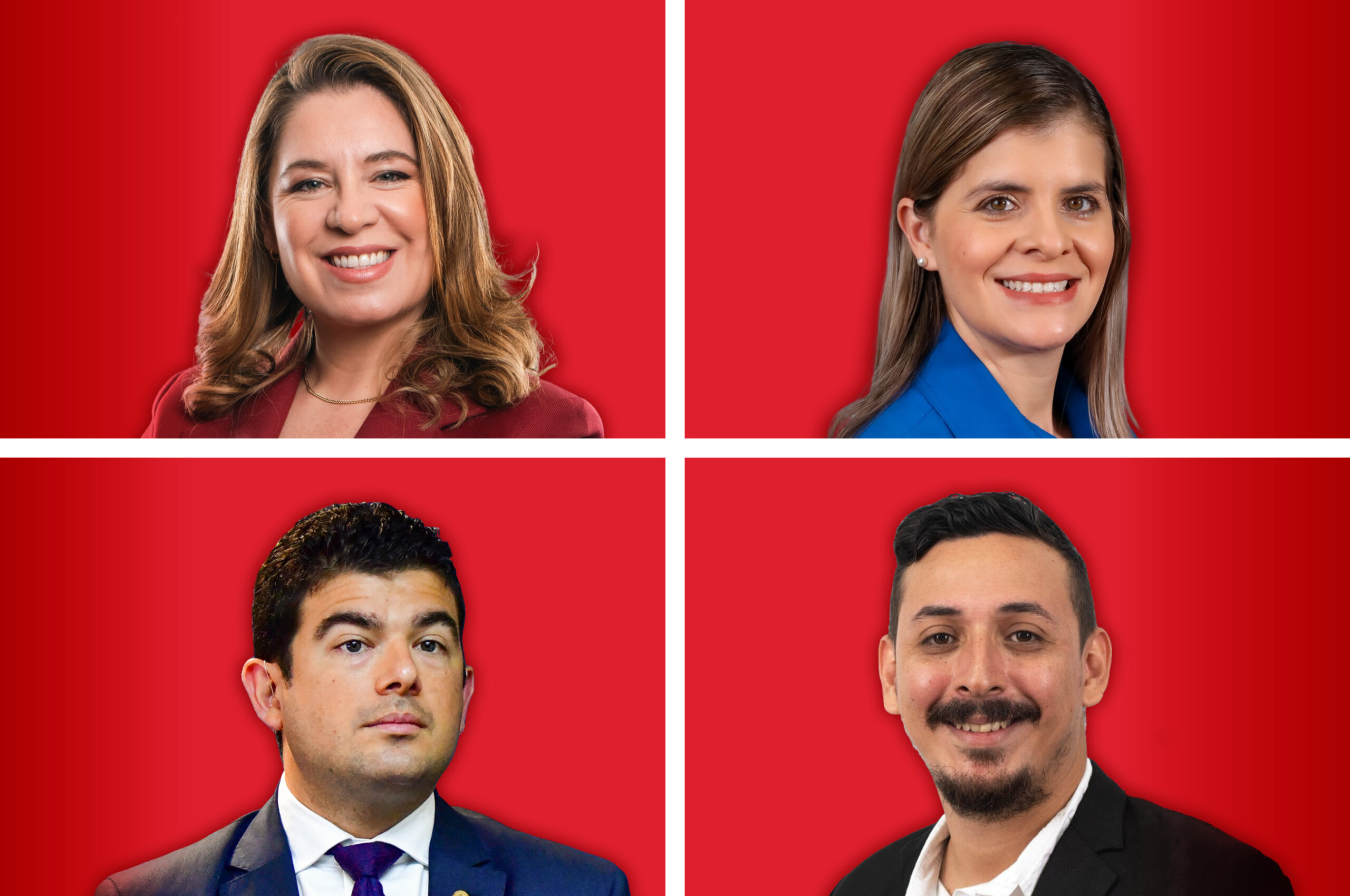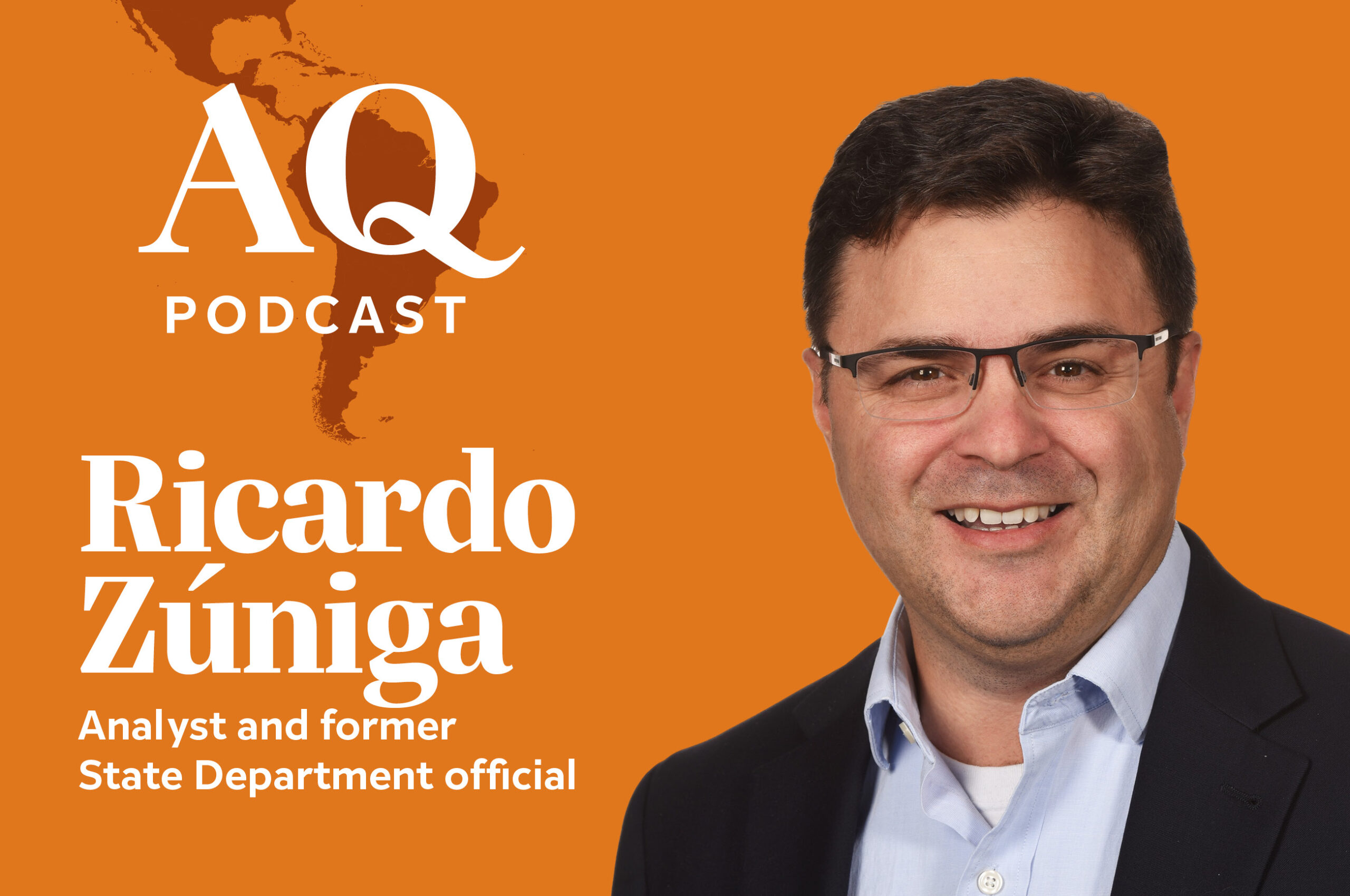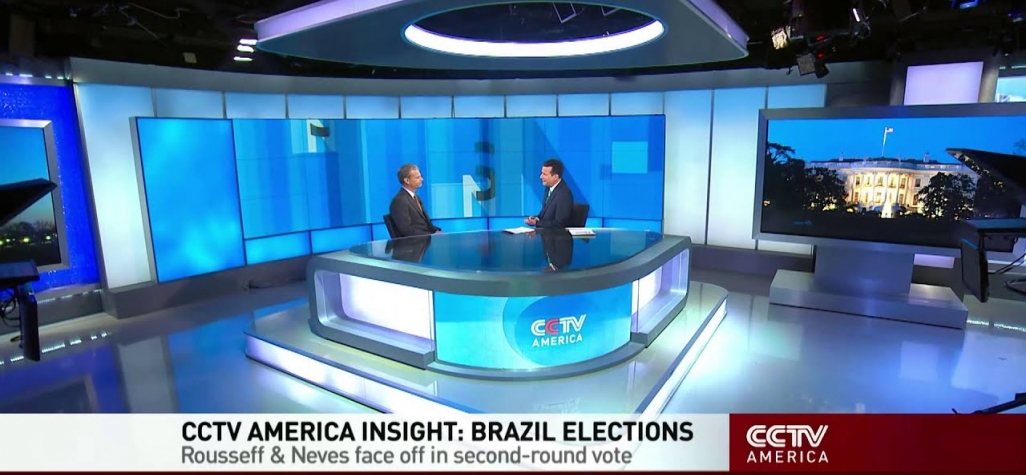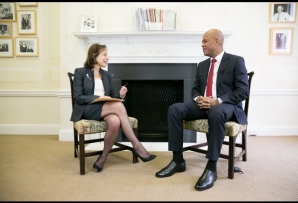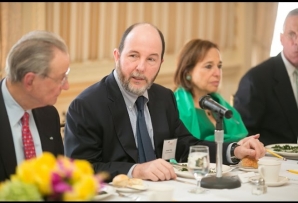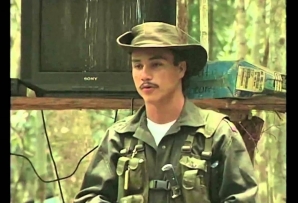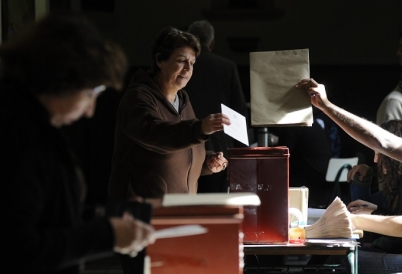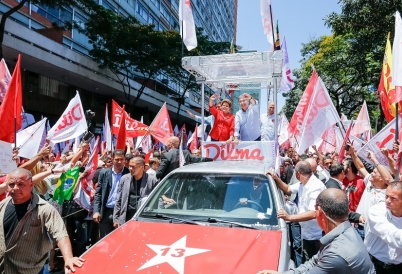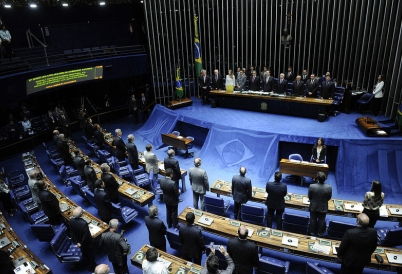Guide: 2014 Elections in the Americas
Guide: 2014 Elections in the Americas
Eight countries in the Western Hemisphere will hold national-level elections in 2014:
|
Collectively, these countries represent around 60 percent of the population of the Western Hemisphere. Voters will elect seven presidents and 1,699 legislators in total. AS/COA Online presents an overview of the region’s federal elections in 2014, along with the latest analysis, results, multimedia, and expert perspectives.

Costa Rica
Type: Presidential and Legislative
First Round: February 2, 2014
Runoff: April 6, 2014. A second round is held if a candidate fails to win more than 40 percent of votes during the first round. During the second round, the victor wins by a majority.
Inauguration: May 8, 2014
Number of Seats: In addition to the president, 57 members of Costa Rica’s unicameral Legislative Assembly will be elected for four-year terms. Reelection is allowed, but consecutive terms are not.
Terms: Presidents serve four-year terms and can be reelected, but cannot serve consecutive terms.
El Salvador
Type: Presidential
First Round: February 2, 2014
Runoff: March 9, 2014. If none of the candidates achieve an absolute majority (50 percent of the vote plus one), a second election is conducted no later than 30 days later. The candidate who garners the most votes wins the second round.
Inauguration: June 1, 2014
Terms: Presidents are elected for five-year terms without the possibility of consecutive re-election.
Colombia
Type: Legislative
Election Day: March 9, 2014
Number of Seats: The Senate holds 102 seats while the Chamber of Deputies houses 166. All seats are up for grabs each election cycle.
Start of Legislative Session: Elected officials will take office on July 20.
Terms: Colombia’s senators and representatives can serve an unlimited number of four-year terms.
Panama
Type: Presidential and Legislative
Election: May 4, 2014
Presidential Election: There is only one round of voting in the presidential election. The candidate who receives a plurality of votes takes office. Presidents are elected for five-year terms and must wait two terms to be eligible for reelection.
Inauguration: July 1, 2014
Number of Seats: 71 representatives in Panama’s unicameral Legislative Assembly will be elected for five-year terms, along with the president.
Terms: Presidents are elected for five-year terms and must wait two terms to be eligible for reelection. There are no term limits for National Assembly members.
Colombia
Type: Presidential
First Round: May 25, 2014
Runoff: June 15, 2014. A second round is held if a candidate fails to win more than 50 percent of votes during the first round. During the second round, the victor wins by majority.
Inauguration: August 7, 2014.
Terms: Presidents serve four-year terms, with the possibility of consecutive reelection.
Brazil
Type: Presidential and Legislative
First Round: October 5, 2014
Runoff: October 26, 2014. A runoff takes place if a candidate fails to receive more than 50 percent of the vote. The winning candidate in the second round must win an absolute majority.
Inauguration: The president takes office on January 1, 2015. The new legislative session starts on February 1, 2015.
Number of Seats: There are 513 seats in the Chamber of Deputies and 81 spots in the Senate. Deputies serve four-year terms, and all seats are up for a vote in 2014. Senators serve eight-year terms; a third of seats are up for a vote in 2014.
Terms: Presidents serve four-year terms with the possibility of consecutive reelection.
Bolivia
Type: Presidential and Legislative
First Round: October 12, 2014
Runoff: December 7, 2014. A runoff takes place if a candidate fails to win more than 50 percent of the vote, or 40 percent of the vote with a 10 percent lead over the second-place candidate. In a runoff, the candidate who gains the majority of the vote wins.
Inauguration: The president and legislators take office on January 22, 2015.
Number of Seats: The Chamber of Deputies will fill all 130 seats for five-year terms, and the Senate will elect all 36 members for five-year terms. Members of Congress are eligible for one consecutive reelection.
Terms: Presidents are permitted one consecutive reelection. However, in May 2013 a law was passed allowing President Evo Morales to run for reelection a second time.
Uruguay
Type: Presidential and Legislative
First Round: October 26, 2014
Runoff: November 30, 2014. A runoff is held on the last Sunday of November of the same year if no candidate garners an absolute majority in the first round.
Inauguration: March 1, 2015
Number of Seats: In Uruguay’s bicameral National Legislature, 30 senators and 99 representatives will be elected for five-year terms. There are no term limits for either the upper or lower houses. Also, the vice president serves as an ex officio member of the Senate, bringing to total number of senators to 31.
Terms: Presidents are elected for five-year terms, and may be re-elected but not for consecutive terms.
United States
Type: Legislative
Election Day: November 4, 2014
Number of Seats: All 435 seats are up for election in the House of Representatives, as well as 33 of the 100 Senate seats.
Start of Legislative Session: Newly elected legislators will take office on January 3, 2015.
Terms: Representatives are elected to two-year terms, with all seats up for grabs each election cycle. Senators, on the other hand, serve six-year terms with one-third of Senate seats up for renewal every two years. There are no congressional term limits in the U.S. Congress.
Editor's note: This guide originally incorrectly stated that seven countries in the Americas will hold elections in the 2014. As of the start of 2014, the number of countries with national elections planned is eight, with seven presidents and 1,699 legislators to be elected across these countries. This guide also incorrectly stated that Panama's presidential inauguration is September 1; the correct date is July 1. This guide was updated on May 2 to reflect Bolivia's exact election dates, announced on April 30.
2014 Election Guide Blog
AS/COA Online looks at the latest poll numbers, the leading presidential candidates, and election issues in the countries in the Americas holding federal-level elections in 2014.
10 Facts on Bolivia's 2014 Election: Morales Poised to Win Third Term
President Evo Morales commands a strong poll lead and his party could win a two-thirds majority in the legislature on October 12.
If the polls are correct, Evo Morales could avoid a runoff vote.
The third and final poll by Ipsos gives Morales 59 percent of voter intention for the October 12 election. That puts him a full 46 points ahead of his top rival, Samuel Doria Medina of the Democratic Unity party. Jorge “Tuto” Quiroga of the Christian Democratic Party holds the third spot with 8 percent of voter intention. The most recent survey by polling firm Mori also gives Morales 59 percent, followed by Doria Medina at 18 percent and Quiroga at 9 percent.
In order to avoid a second round of voting, Morales needs 50 percent of the vote plus one, or at least 40 percent of votes and at least 10 percent more than the second-place candidate. A runoff would take place on December 7.
A victory for Morales will result in his third consecutive term.
Should he win, Morales would start his third term in a row, even though Bolivia’s Constitution only allows a sitting president to be reelected once, meaning for two consecutive terms. Last year, Bolivia’s Supreme Court decided that since the new Constitution took effect while Morales was in office in 2009, his first term fell outside the rule. This allowed Morales to count his second term as his first. He initially became president in January 2006 and an election victory would mean another five-year term, keeping him in office until January 2020.
The president has high approval ratings and faces a fragmented opposition.
The opposition has the challenge of running against a president whose approval rating ran as high as 73 percent in June, according to Ipsos. Even in Santa Cruz, a region considered an opposition stronghold, Morales’ support reached 68 percent in the survey.
One reason for Morales’ high approval rating is the country’s strong economic growth under his charge. Bolivia’s GDP growth hit 6.8 percent in 2013 and the IMF forecasts it will have the strongest GDP growth in South America this year, at 5.2 percent. Not only that, but Morales’ party, the Movement Toward Socialism (MAS), holds the largest number of seats in the country’s legislature. Morales also faces a divided opposition, given that Doria Medina and Quiroga are fighting over the same bloc of opposition voters, says Bolivian daily La Razón. There are two other minor candidates—former Morales ally Juan del Granado and indigenous leader Fernando Vargas—trailing in the polls and further dividing the vote.
Morales’ top rival is a business leader, prior candidate, plane crash survivor, and former kidnapping victim.
Since 1987 Doria Medina has led Soboce, a Bolivian cement company, and he won the 2012 Latin American Industrialists Association’s award for top industrialist in the region. But he also spent time in public office, serving as the planning minister during the government of President Jaime Paz Zamora (1989-1993). The centrist business leader sought the presidency twice, in 2005 and 2009, placing third both times. In 1995, he was kidnapped for 45 days by the Peruvian guerilla group known as the Túpac Amaru Revolutionary Movement. A decade later he survived a plane crash.
The candidate polling third is a former president.
Quiroga served as president from August 2001 to August 2002. He ascended to that position after Hugo Banzer, for whom he served as vice president, stepped down due to health problems. This isn’t the first time Quiroga has sought to recapture the presidency; he ran and lost against Morales in 2005.
Morales skipped the only presidential debate.
The president opted not to take part in the September 28 debate, nor did Vice President Álvaro García take part in the September 21 debate among vice presidential candidates. A spokesman for the president said Morales did not need to participate because he does so on a daily basis by listening to the Bolivian people, which is the “true debate.”
The entirety of the legislative assembly is up for election.
All 130 seats in the Chamber of Deputies and 36 seats in the Senate will be selected on Sunday. In both cases, legislators serve five-year terms. In the lower house, 70 deputies are voted by a plurality vote, 53 by proportional representation, and seven are reserved for indigenous candidates, also elected via a plurality vote. In the Senate, each of Bolivia’s nine departments elects four senators through a proportional voting method. Legislators can be reelected once to serve two consecutive terms.
Polls indicate that Morales’ party could win a two-thirds majority in the assembly.
MAS could snatch up 28 of the 36 seats in the Senate and 83 of 130 seats in the Chamber, reports Bolivian media outlet Página Siete, based on a late August poll by Tal Cual. That would give the party 111 seats in the legislature, meaning a two-thirds majority. MAS could also capture some portion of the seven seats set aside for indigenous candidates. In the run up to the election, Morales called on his supporters to deliver 80 percent of the vote for MAS.
Almost 900,000 more people are registered to vote compared to the last election.
About 6.25 million people are registered to vote on Sunday, including 272,000 of them from abroad who can cast ballots for presidential and vice-presidential candidates. In Bolivia, 5.97 million people are registered, representing 60 percent of the population and an increase of roughly 885,000 over the 2009 election. The largest numbers of voters are in La Paz, Santa Cruz, and Cochabamba, respectively. It is compulsory for eligible voters to participate and Bolivians are given the right to vote at the age of 18. Turnout was high during 2009 elections, with nearly 95 percent of the electorate participating.
Bolivia implemented a new gender quota for the 2014 vote.
A law passed in 2010 and implemented during this election requires candidate lists for legislative posts to include an equal number of men and women. Women currently hold 25 percent of lower house seats and 47 percent of Senate seats.
On top of that, a social movement has sought to decry candidates who are suspected of violence against women. Using the slogan “Machista, fuera de la lista” (“Misogynist, get off the list”), the organizers succeeded in forcing two candidates accused of beating their wives to step down. One of them was a senate candidate for MAS.
2014 Elections Blog: Peru's Municipal and Regional Vote
Around 21 million Peruvians will elect mayors and regional presidents on October 5. Who will win the coveted post of mayor of Lima?
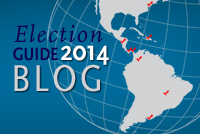 On October 5, Peruvians will vote in regional and municipal elections. Voters will elect 25 regional presidents—a position similar to that of a governor—195 provincial mayors, and 1,647 district mayors, among other local seats. All positions are for four-year terms. Voting in Peru is mandatory; non-voters are fined and may have access to certain public services withheld. More than 21 million Peruvians are eligible to vote.
On October 5, Peruvians will vote in regional and municipal elections. Voters will elect 25 regional presidents—a position similar to that of a governor—195 provincial mayors, and 1,647 district mayors, among other local seats. All positions are for four-year terms. Voting in Peru is mandatory; non-voters are fined and may have access to certain public services withheld. More than 21 million Peruvians are eligible to vote.
One of the major races is for the mayoralty of Lima. Polls favor Luis Castañeda, who served as mayor from 2003 to 2010; a September 38 IPSOS survey gave him around 54 percent of voter support. The incumbent—Mayor Susana Villarán, who survived a 2013 recall vote—is in second with 13 percent. Salvador Heresi, mayor of Peru’s San Miguel district, stands in third with 7 percent, while former Minister of Transportation and Communications Enrique Cornejo is in fourth with 5 percent. Pollster CPI gives an even more substantial lead for Castañeda in a September 28 survey, with nearly 60 percent compared to Villarán’s 11.5 percent.
Ipsos’ President Alfredo Torres wrote this month that although a win for Castañeda is “virtually certain,” elections in Peru generally tend to be unpredictable. Around 40 percent of Peruvians don’t definitively make up their mind until the last week before the vote, and around half of those don’t decide until election day. A September 6 survey from pollster Vox Populi found that 50 percent of Lima residents had either not decided for whom to vote or said they’d possibly change their decision.
Another race to watch is that of the regional president of Cajamarca, a department with ongoing mining conflicts. Current Regional President Gregorio Santos Guerrero leads the polls—even though he has been in prison since June on corruption charges. Santos supported protests against Cajamarca’s controversial Conga mining project in recent years. Meanwhile, businessman Osías Ramírez is polling second.
The armed forces will deploy 48,700 troops throughout the country to provide security on election day. Also, observers from the Union of South American Nations and the Organization of American States will travel to Peru to monitor the election. And after a slow vote-counting in 2010 drew criticism, the head of the country’s electoral authority promised that this year, 100 percent of results will be available within 24 hours. But if regional presidential candidates fail to reach 30 percent of the vote, they’ll face runoff elections in November. Polls indicate that at least 11 of 24 departments will likely have to hold second-round votes for regional presidents.
2014 Election Blog: Brazil's October 5 Presidential Vote
Find out what's happening in the week leading up to the election.
 Get updates on Brazil's presidential vote, which takes place October 5. Also, explore our recent coverage to get an overview of the election, candidates, polls, and more:
Get updates on Brazil's presidential vote, which takes place October 5. Also, explore our recent coverage to get an overview of the election, candidates, polls, and more:
- Learn more about what's been happening on the campaign trail in our election blog.
- Check out our election guide, which includes important dates and facts about the vote.
- View our infographic with a rundown of numbers about the election.
2014 Election Blog: Social Media's Growing Role in Brazil's Electoral Campaigns
Presidential candidates are competing for followers on networks like Facebook and Twitter ahead of the October 5 vote.
On October 5, Brazilians head to the polls to elect their next president, as well as legislators and governors. As campaigns enter the final weeks, candidates are going beyond the airwaves and harnessing the power of social media.
There’s a reason political hopefuls are turning to these networks: more and more Brazilians are getting online, and many Brazilian web users frequent social media. In 2013, more than 105 million Brazilians—about 52 percent of the country’s population—accessed the internet, according to Ibope. A Social @ Ogilvy survey of 16 countries, including the United States and Brazil, showed that Brazilians spend an average of 13.8 hours a month on social networks—more than any other country. Another reason social media proves useful is that electoral law limits candidates to specific amounts of daily airtime on TV and radio, but social media provides an unlimited platform.
So as presidential candidates battle it out in the polls, they’re also after social media followers. President Dilma Rousseff leads in number of Twitter followers, but challenger Marina Silva has the most Facebook fans. Rousseff used Twitter during her 2010 campaign, but stopped using the network after her election. Her team reactivated her account and started a Facebook page in September 2013, shortly after the country’s social media-fueled protests. Polling third, Senator Aécio Neves leads in number of Instagram followers.
Electoral Monitor, a website that tracks presidential candidates’ social media mentions, shows Silva as the frontrunner this month, with over 335,000 mentions compared to around 296,000 for Rousseff and 207,000 for Neves. The site also looks at candidates’ “social health” by dividing the number of positive mentions by the number of overall mentions. Using this measure, Neves leads with 82 percent, compared to 46 percent for Rousseff and 44 percent for Silva. Plus, this month, popular ex-President Luiz Inácio Lula da Silva joined Twitter, largely focusing on campaigning for Rousseff.
Raquel Recuero, a social media researcher at Brazil’s University of Pelotas, told BBC Brasil that discussions about the elections on social media can carry over into the real world to influence those who may not have access to the internet, as last year’s protests did. Indeed, Facebook and Twitter serve as a forum for voters, who share everything from their preference for candidates to campaign videos.
Facebook is the country’s most popular social network, with roughly 89 million users. Along with a space for voters to share thoughts on the candidates, the website will even become a new space for candidates to debate. On September 16, Facebook Brasil challenged presidential candidates to participate in a livestreamed “Face-to-Face” event allowing users to ask questions in real time. Silva was interviewed on September 17, and Neves will participate on September 23.
Twitter, too, has become a hotspot for discussing the candidates, the presidential debates, and election issues. It’s also being used to hold “tuitaços,” organized mass tweeting events related to political issues. As a result, the network has become a source of controversy. Last week, Silva and Marina exchanged barbs via tweet; earlier this month, Neves took legal action against Twitter, demanding the company provide user information about 66 Twitter accounts allegedly slandering the candidate.
Poll Update: Potential for a Close Runoff in Uruguay's Presidential Race
The ruling party maintains the lead, but may not receive enough votes to avoid a second round.
With less than two months to go before Uruguay’s October 26 general election, polls show the ruling Broad Front coalition may not muster the absolute majority needed to avoid a runoff against the opposition National Party in the race for president. If no candidate receives the necessary 50 percent plus one, a second-round vote will be held on November 30.
An Instituto Factum survey conducted between August 29 and September 3 measured voter intention for the Broad Front at 42 percent, a 10-point lead over the National Party, at 32 percent. The National Party—whose presidential candidate, Luis Lacalle Pou, is the son of a former president—saw a slight rise in support with a one-point increase in both July and August. On the other hand, ex-President Tabaré Vázquez leading the Broad Front’s ticket recovered from a one-point drop in August. The Colorado Party, headed by Pedro Bordaberry, stands in third place with 15 percent. The latest CIFRA poll conducted in August put the Broad Front’s support at 41 percent and the National Party’s at 32 percent, a nine-point difference and the narrowest margin during the entire campaign.
Meanwhile, a September 10 survey from Equipos Mori found slightly lower levels of support for the Broad Front and the National Party, at 40 and 28 percent, respectively, as well as for the Colorado Party, at 11 percent. The pollster measured a higher number of undecided voters than the Factum and CIFRA surveys, and found 11 percent of voters were not sure which candidate to support.
In 2009, President José Mujica of the Broad Front received 48 percent of the first-round vote before winning in the runoff.Vázquez needs a similar level of first-round support to have a chance in November’s runoff, said CIFRA Director Luis Eduardo Gonzalez in an interview with Uruguay’s El Pais. “If Vázquez is between 44 and 45 percent [in October], he will most likely lose in November, but if he is between 46 and 47 percent, it is more likely he will win,” he added.
Although the Broad Front enjoys a lead, the combined support among opposition parties may mean a close runoff. The National and Colorado Parties constitute Uruguay’s right-leaning “traditional parties,” and votes from the third-place party are expected to go to the National Party in the event of a runoff, rather than the leftist Broad Front. Currently, the combined support for these traditional parties surpasses that of the Broad Front in both the CIFRA and Factum polls.
A possible tight race owes more to voters' desire for mild change than rejection of the current government, write AS/COA's Christopher Sabatini and Rebecca Bintrim in U.S. News & World Report.
Economic insecurity and middle class expectations played key roles in the country’s election results, writes COA’s Eric Farnsworth for U.S. News & World Report.
On October 5, voters elected the most conservative legislature since the post-1964 period, as well as a larger number of political parties.







